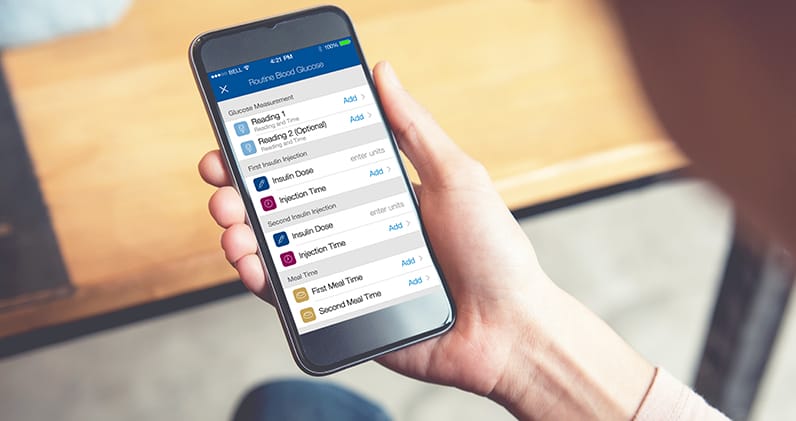

Diabetes in Dogs
Managing Diabetes
Caring for Your Dog With Diabetes
Although diabetes is not a completely curable disease, it can be managed successfully with proper treatment, diet and exercise.
The goal of managing diabetes is to maintain glucose in an acceptable range while avoiding hypoglycemia (low blood sugar) and its associated signs. Proper management can reduce or eliminate signs of diabetes, such as excessive thirst and urination.
Starting Insulin Therapy
After diagnosis, your veterinarian will determine the insulin dose based on your dog’s weight.
Your veterinarian and veterinary nurse are your best advocates. They will teach you everything you need to know about giving Vetsulin® via syringe or VetPen®. They can also discuss monitoring your dog’s blood or urine glucose levels at home.
Shortly after starting insulin therapy, you should begin to see a decrease in the amount of water consumption and urination volumes. Pay close attention to these changes, along with appetite and attitude, to help your veterinarian in treatment decisions. Based on these signs, and glucose monitoring, your veterinarian may adjust your dog’s insulin dose. Consistent monitoring and patience is key to finding the best dose for your dog.

Monitoring Glucose Levels
Monitoring your dog’s glucose level is important to overall therapy for managing diabetes. It can be done in two ways:
● Blood Test
Measuring the glucose level in your dog’s blood is the most accurate method. It can be done either at the veterinarian clinic or at home with a portable glucometer and blood test strips. Learn More About Monitoring Blood Glucose
● Urine Test
This test checks your dog’s urine for the presence of glucose and ketones (a chemical produced when the body burns fat for energy). It is not as accurate as measuring glucose in the blood, but can be done at home easily. Learn More About Monitoring Glucose & Ketones
If your pet has significant weight gain or loss, or recurrence of signs that were previously controlled, talk to your veterinarian. This may affect treatment or may be a sign of a complication of diabetes.
Controlling Diet
Diet plays a vital role in helping to keep your dog’s diabetes regulated. Your veterinarian can recommend choices specifically for your dog, but these basic tips can help:
- Keep meal content and volume identical each day to avoid changes in insulin requirements
- Choose dog foods with quality sources of protein, and low carbohydrates
- Switch to a reduced-calorie diet if your dog is overweight
Overall, a tasty and nutritious diet can minimize fluctuations in blood glucose, help your dog maintain a healthy weight, and manage diabetes. Learn More About Nutrition for Dogs With Diabetes
Consistent Exercise
Exercise for dogs with diabetes needs to be monitored. Although it can help with happiness and health, it can also affect your dog’s blood glucose levels. If your dog suddenly expends more energy than normal, they will burn up more glucose, resulting in an extremely low blood sugar level. Your veterinarian can help plan for changes in treatment associated with increased periods of exercise, like long hikes or agility exercises.
For dogs of a healthy weight, the usual amount of exercise should remain relatively unchanged. Overweight dogs could potentially use exercise for controlled weight loss, but it’s important to talk to your veterinarian about exercise plans before starting.
Spaying Your Female Dog
If you have a female dog, your veterinarian will recommend that you have your dog spayed as part of the treatment. That’s because one of the female sex hormones, progesterone, can interfere with the normal action of insulin. In order to remove the source of progesterone, spaying your diabetic female dog is critical.
Regular Veterinary Checkups
Keep up with regular visits to your veterinarian. This is the best way to properly manage your dog’s diabetes. It can also prevent possible complications and side effects from happening. Typically your veterinarian will recommend visiting 2–4 times a year for a physical examination and possibly laboratory testing.
Even after a long period of stability, changes to insulin requirements may need to be updated. Many of these updates are due to changes such as:
- Weight loss or gain
- Change in exercise regimen
- Stress or other situations
- Presence of other diseases or infections
- Progesterone in unspayed females
- Additional medications
If your dog is going through any of these changes, they may again show signs of diabetes (drinking, urinating more, etc.). If you’re aware of changes, or notice signs reappearing, consult your veterinarian right away.
Living With a Dog With Diabetes
Attentive care and regular doses of Vetsulin® can help your dog lead a happy, normal life.
The good news is that the life expectancy of dogs that stay regulated with insulin is similar to other healthy dogs. Good communication between you and your veterinarian, and adhering to the management regimen, will help keep your dog healthy.
Find more information and FAQs about managing diabetes. Read Now
Tracking Results

If you feel your dog is at risk for developing diabetes, consider having your pet tested during a regular veterinary examination at least once a year.
Tracking Tools & Resources
- Pet Diabetes Tracker app
Review and keep important information to manage care. - Blood Glucose Curve Tool
Easily record blood glucose readings to generate a blood glucose curve. - Helpful Downloads
Additional resources to understand and manage canine diabetes.
Further Reading


Talk to Your Vet Today
Find a veterinarian to learn more about pet diabetes, and how cats and dogs can lead a happy, healthy life with proper management.
IMPORTANT SAFETY INFORMATION:
VETSULIN® and VETPEN® are for use in animals only. Dogs and cats known to have an allergy to pork or pork products should not be treated with VETSULIN®. VETSULIN® is contraindicated during periods of hypoglycemia. Animals with severe ketoacidosis, anorexia, lethargy, and/or vomiting should be stabilized with short-acting insulin and appropriate supportive therapy before use. As with all insulin products, careful patient monitoring for hypoglycemia and hyperglycemia is essential. Overdosage can result in profound hypoglycemia and death. Progestogen and glucocorticoid use should be avoided. The safety and effectiveness of VETSULIN® in puppies, kittens, breeding, pregnant, and lactating dogs and cats has not been evaluated. Keep out of reach of children. Avoid contact with eyes. In case of contact, immediately flush eyes with copious amounts of water for at least 15 minutes. Accidental injection may cause clinical hypoglycemia. In case of accidental injection, seek medical attention immediately. Exposure to the product may induce a local or systemic allergic reaction in sensitized individuals. For complete safety information, refer to the product label.




